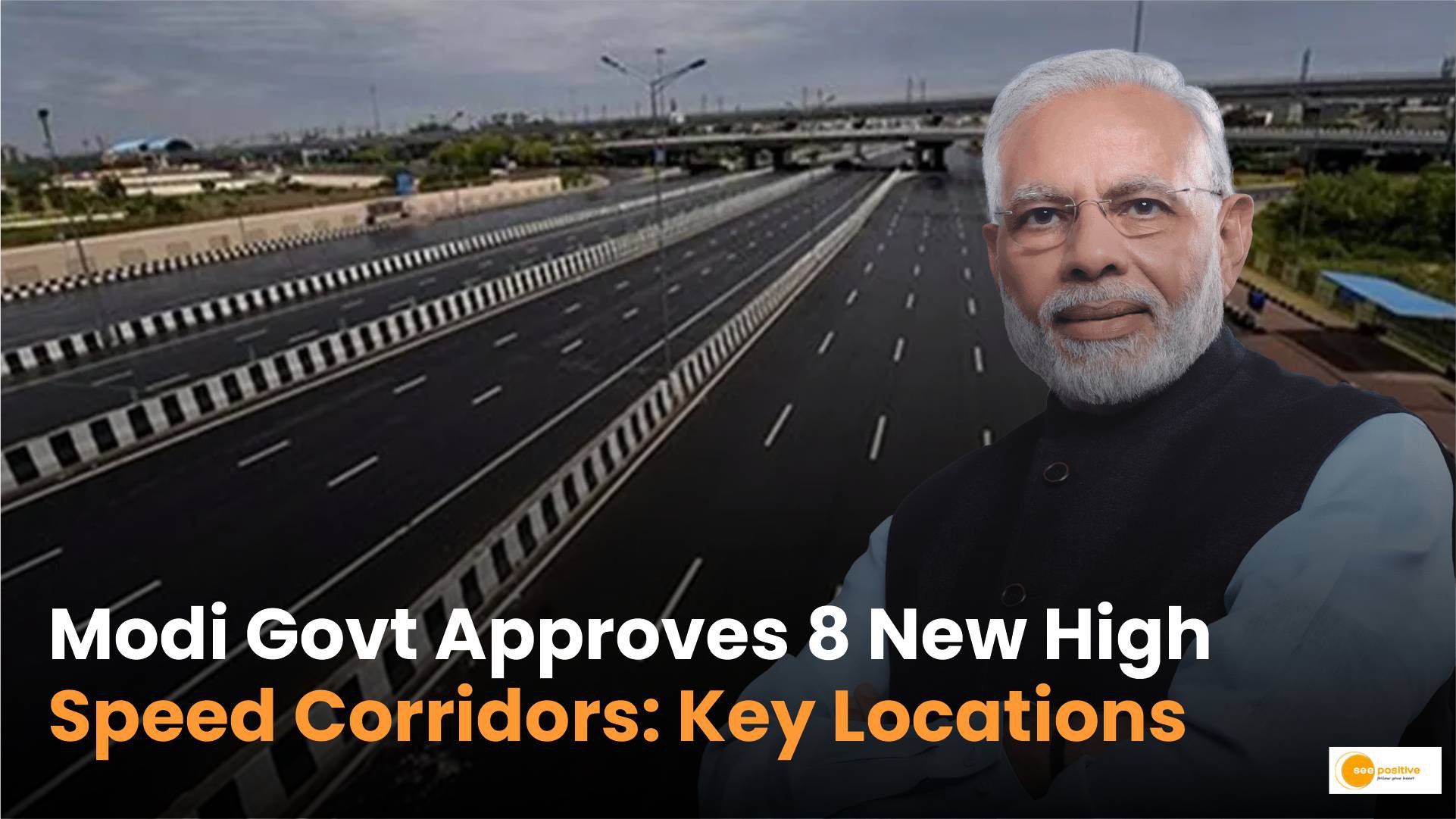The approval of the construction of eight new high-speed road corridors across India is a key decision made by Prime Minister Narendra Modi’s Cabinet. These ₹50,655 crores worth of national high-speed road corridor projects will span a total of 936 kilometers. The locations of these new corridors that will be built are listed below.Locations of the 8 New Corridors
- Four-lane Kharagpur-Moregram National High-Speed Corridor and six-lane Agra-Gwalior National High-Speed Corridor
- Six-lane National High-Speed Corridor Tharad-Deesa-Mehsana-Ahmedabad
- Ayodhya Ring Road, four lanes
- Pathalgaon and Gumla are connected by a 4-lane section of the Raipur-Ranchi National High-Speed Corridor.
- Kanpur Ring Road, a 6-lane roadway
- The creation of a 4-lane Northern Guwahati Bypass and the expansion and enhancement of the current Guwahati Bypass
- Nashik’s eight-lane elevated Phata-Khed Corridor is located near Pune.
TRANSFORMATIVE boost to India’s infrastructure landscape!
— Narendra Modi (@narendramodi) August 2, 2024
The Cabinet's approval of 8️⃣ National High-Speed Road Corridor Projects at an expenditure of over Rs. 50,000 crore will have a MULTIPLIER EFFECT on our economic GROWTH and boost EMPLOYMENT opportunities.
It also… pic.twitter.com/fim8aNP2Tr
The New National High-Speed Road Corridors’ Advantages
- Between Agra and Gwalior, the journey time will be halved.
- The Kharagpur-Moregram Corridor will be advantageous to the economies of West Bengal and the Northeast.
- It is anticipated that the Kanpur Ring Road will reduce traffic on the nearby highway network.
- Raipur-Ranchi Corridor completion will accelerate Jharkhand and Chhattisgarh’s growth.
- By completing Gujarat’s high-speed road network, the new corridor between Tharad and Ahmedabad will enable seamless port connectivity and lower logistics costs.
READ MORE The Role of the Governors in Indian states: Powers and Salary
Positive Takeaway
The central government’s vision to create these corridors is part of a broader goal to transform India into a $30+ trillion economy by 2047. This initiative involves the identification of a 50,000 km high-speed highway corridor network, based on scientific transportation studies using GSTN and toll data, to support India’s economic growth.


